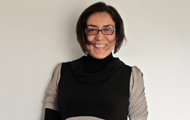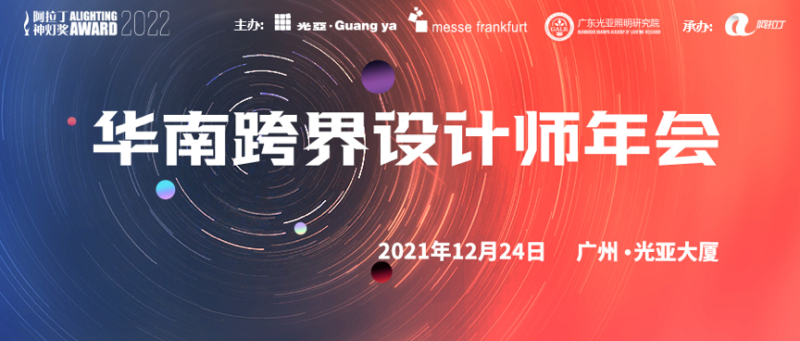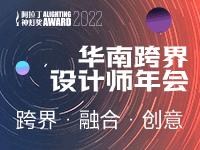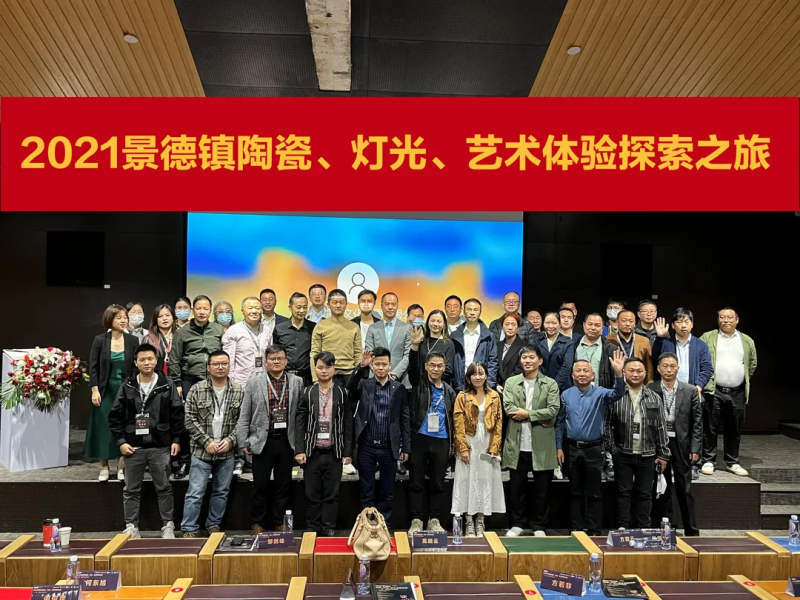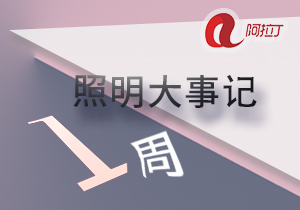个人简介
Paulina Villalobos在位于智利北部的阿卡塔马沙漠长大,这是世界上最干燥的地方,接受着异常强烈的太阳辐射,同时也拥有便于天文观测的清澈天空……也许这都是Paulina迷恋上“光”的伏笔。Paulina毕业于智利大学建筑学院,在某次设计大赛中凭借一个文化中心的建筑项目脱颖而出,此后便在圣地亚哥开始了三年的建筑师生涯。随着经验的积累,她渐渐发现光在建筑中的重要性,开始辗转日本、德国和瑞典,寻求系统、专业的学习。几年后她回到智利,成立自己的灯光工作室DIAV(Dise?o Iluminación Arquitectura Verde),专注灯光设计和能源顾问。
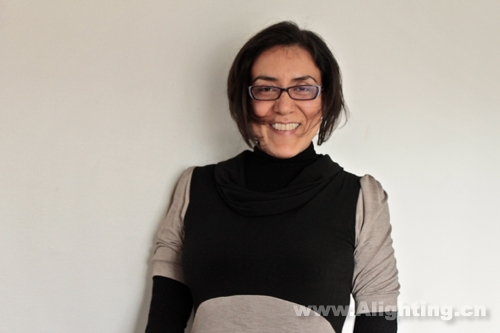
2005年到2008年期间,Paulina被任命为智利一本建筑杂志的主编,同时,她也是技术杂志《Alumundo》关于灯光设计的专栏作者。2006年,她与Luxia照明合作开展名为Noche Zero的光研究项目。从2008年开始,Paulina受聘为瑞典皇家理工学院灯光设计研究生专业的讲师。此外,她也经常给智利建筑师们授课,培训照明相关知识。
Alighting Design: How did you get into the lighting industry?
《阿拉丁·设计》:你是怎样进入照明行业的?
PV:I started working in a big office when I graduate as an Architect, and discovered there was a very specific specialization for the lighting, which is the nicest part people worried about among all the construction issues.
PV:我刚毕业是在一家大型设计公司当建筑师,当时就注意到灯光这个特殊的范畴,这也是整个工程项目中最让人赏心悦目的部分。
Two years later I design my first building (by myself!) a Cultural Center, then I realized I had no clue about lighting! So I decided to go abroad and studied to improve my architectural skills. I went to Germany for a Master course in Architectural Lighting Design in Wismar, after finish it I went to Sweden to study more about light, at KTH in Stockholm. I felt in love with light. I forgot that I was an Architect! Now I consider myself as a Lighting Designer.
两年后我独立完成了自己的第一个建筑作品——一个文化中心,并意识到我对灯光一无所知!我决定出国深造,在德国维斯马完成建筑灯光设计的硕士课程之后,又继续前往瑞典皇家理工学院学习。这时候我已经爱上了“灯光”,忘却了建筑师的身份。现在,我把自己看作是灯光设计师。
I started my own company DIAV in 2005, with one desk and my laptop. Since then it has being growing little by little. Now, to celebrate the 10 years of DIAV I came to Asia to try this challenging and vibrant context.
2005年我成立了自己的公司DIAV,从只有一张桌子一台电脑一点一点发展起来。十年后的今天,我们来到亚洲,希望能在这片充满挑战和活力的土地上继续学习和成长。
Alighting Design: Were there designers that influenced you when you started in lighting?
《阿拉丁·设计》:在你进入照明行业时,有没有哪个前辈设计师对你产生过启蒙影响?
PV: My first heroes were my teachers and mentors. I can recall Jan Ejhed and Kai Piippo from Sweden, Vesa Honkonen from Finland, Erick Selmer from Norway, Louis Claire from France, Kaoru Mende from Japan. Later, after finish my studies I can mention the inspiration and energy from Gustavo Avilés from Mexico and Martin Lupton from UK. I think all of them influence me in the way to approach the work and to make me wonder “That is the mood and ambiance in which I want to work”.
PV:有,我的老师们,像瑞典的Jan Ejhed、Kai Piippo,芬兰的Vesa Honkonen,挪威的Erick Selmer,法国的Louis Claire,日本的Kaoru Mende;也包括踏出校门之后遇到的精神导师Gustavo Avilés(墨西哥)和Martin Lupton(英国)。他们都在我的照明事业上推波助澜了一把,让我知道,这就是我想要的工作。
Alighting Design: What fascinates you the most about light?
《阿拉丁·设计》:灯光最吸引你的是什么?
PV: The power of light is to be used as a tool of space design , to create mood and emotion. It’s very technical, but the main guide is artistic. Design with light is about understanding the space to be lit and the people who will use it and feel it. Sometimes it is like working with music, which is immaterial, you just can imagine the final result.
PV:灯光最大的魅力在于营造空间氛围和情绪。事实上,充满技术性的灯光设计其实是由艺术性来引导的。设计师既要充分理解空间的结构,也要了解使用者的体验和感受,所以,灯光设计有时候就像无色无形的音乐,你只能靠想象力。
But what it really fascinates me is the design process, the creativity to deliver a design concept that will be experienced in an architectural space or in a landscape or urban place. In that process I have fun and enjoy doing it.
但真正吸引我的是设计的过程,把充满创意的构想实践在具体的建筑、景观和城市规划中,正是我的志趣所在。
Alighting Design: What is your design philosophy?
《阿拉丁·设计》:你的设计理念是什么?
PV: Design with a concept. To deliver a concept you need to brainstorm with your head, heart and guts. I also make the exercise to treat the architectural or landscape project as a person, and ask him/her: How do you wish to be lit?
PV:遵循你的设计概念,而设计概念通常源自于殚精竭虑的头脑风暴。我会把建筑或者景观项目想象成一个“人”,然后问他:“你希望怎样被照亮?”
You can solve a problem by distributing luminaires with a nice layout and calculating the lighting levels, but that is not design. The design process must start with a concept design, which will be the guidance to work with the light.
当然,漂亮的布灯和准确的照度计算能解决照明的具体问题,但那不是灯光设计。设计必须从设计概念开始,因为它将是后面工作的总指挥。
Alighting Design: What do you think of the relationship between architecture and light? How do you fuse them?
《阿拉丁·设计》:你怎样看待建筑与照明的关系?怎样将二者融合?
PV: The design process between architecture and lighting is very similar. In the way I was trained to be an architect, first you have to gather information and make an analysis of the context, climate, culture, functions, budget, timing, how people will use it, expectations and so on. Also there is a research for inspiration, find similar projects, and innovative solutions, after that comes the brainstorm for the concept or main ideas. The tools in architecture to develop those ideas are solid and concrete to work with shapes and space. But light is immaterial, so the tool is more poetic, even though the process is very similar. Light is for the people and the architecture, so you have to understand the building as good as the people who will use it.
PV:建筑和照明的设计过程非常相似。作为建筑师,首先你必须搜集大量的资料,从中分析环境、气候、文化、功能、预算、时间,以及使用者的期望等。然后你得寻求灵感,分析相似的项目,寻找革命性的解决方案,之后就是关于整个设计概念的头脑风暴。尽管过程相似,但不同的是,建筑需要跟固态的有形的建筑材料打交道,而光是无形的,充满诗意的。灯光是为人和建筑服务的,作为灯光设计师,必须把自己放在使用者的位置上,更好地解读建筑。
[NT:PAGE]Alighting Design: It seems you have done more lighting design projects than architecture these years, why? Is it what you expect?
《阿拉丁·设计》:这些年来你做的灯光设计项目比建筑项目还多,这是你预期的吗?
PV: I felt in love with lights, so I decided to focus on that, and never again promote myself as an architect. And I also rejected a few architectural projects at the beginning of my career as a lighting designer. Another important factor was the market. 10 years ago in Chile -when I started- there were too many architects and few lighting designers.
PV:我已经爱上灯光,也决定“忠贞不二”了。所以我开始不把自己当作建筑师,也推掉了一些建筑项目。另一方面,市场环境也是重要原因。要知道,十年前我刚出道的时候,在智利已经有太多的建筑师,而灯光设计师却很少。
Alighting Design: What kind of lighting design would you prefer? Why?
《阿拉丁·设计》:你喜欢的灯光项目有什么特点?为什么?
PV: The lighting designs which are in coherence with the architecture and most of all, those designs that can tell a story or produce positive emotions.
PV:灯光必须和建筑协调一致,更重要的是能够讲述故事或者激发积极情绪。
Alighting Design: You have clients from different countries. How do you meet the cultural needs of different countries?
《阿拉丁·设计》:你的客户来自不同国家,要怎样满足不同国家或民族的文化需求?
PV: I had clients from Chile (South America), UK (Europe), Singapore and probably soon from Malaysia (Asia). It’s very important to live in the culture, of course it will never be enough. Also it’s always good to be part of a multicultural team, so there will be at least one person in the team who is more aware of the cultural differences, the dos and don’ts.
PV:我的客户来自智利(南美洲)、英国(欧洲)、新加坡(亚洲),很快还会有马来西亚的。体验和了解当地的文化很有必要,但还不够,最好是组建一个多元文化的团队,那么至少会有人对其中的文化差异有所了解,知道有所为有所不为。
It is very important to understand that the lighting concept is “born” from the specific climate, culture, urban context and a specific building in which will be embedded. So is good to know that good lighting design is never a “copy-paste” solution but a specific proposal for a specific project.
设计师必须明确的是,灯光设计概念应该从特定的风土人情、文化背景、城市特质以及特定建筑的内涵中孕育而生,是针对特定项目的专属定制,绝不是拙劣的复制粘贴。
Alighting Design: Have you got projects in China? How do you think of the lighting design industry in China?
《阿拉丁·设计》:你在中国有项目吗?你如何看待中国照明行业的发展?
PV: Just one. I did the architectural lighting design for the Chilean Pavilion for the Universal Expo in Shanghai 2010. The client was the Chilean Government and we provide all the information to the local lighting designer (Teamslitek), for translation and implementation.
PV:我在中国只有一个项目,是受智利政府委托设计的2010年上海世博会智利馆。当时我们委托了当地的灯光设计团队上海鼎晟照明为我们做翻译和工程施工。
The First thing that impressed me was the scale of projects and the speed to do them.
In China everything is another scale: HUGE. I remember talking to Rocky Lui–my local consultant and Chinese partner for the project in Shanghai-I was very proud because I did the lighting design for one of the biggest towers of South America, about 130,000 m2. He was doing maybe 3 projects like this at the same time!
这个项目给我的第一印象是它的规模之大和建设速度之快。在中国,所有东西都可以用一个字来形容:大。我记得我曾对这个项目的中国顾问和合作伙伴Rocky Lui说,我之前完成了一个130,000平方米的塔楼,堪称南美之最,我感觉很自豪——然而却被告知,类似的项目他在中国已经做过3个!
So China is a unique place of growth and speed, for anyone who has never visit Asia is very difficult to imagine. I think related to lighting industry the world is yours. Nowadays almost everything comes from China, from the best to the worst LED technology.
所以说,中国是一个发展很快的独特国度,这是没到访过亚洲的人无法想象的。我想未来的照明的天地是属于中国的,从最差的到最好的,现在几乎所有东西都来自中国。
Alighting Design: Did you do the lighting design for your own house? What is it like?
《阿拉丁·设计》:你有为自己的房子设计灯光吗?是什么样的?
PV: I did not design my house. It’s a flat from the 60s with an amazing view of the sunset.
My place has being changing with me; some areas I love and others are terrible because I use them to test lights meanwhile I’m waiting for the perfect light… I think I will change the corridor and the balcony as soon as I finish this interview.
PV:我没有给自己的房子做“设计”。我的房子是60年代的一所公寓,在黄昏下是绝美的风景线。这些年来它的灯光一直在随着我的想法改变,有些地方我很喜欢,也有一些因为被我用于测试灯光而显得一塌糊涂,而我还在寻求最完美的灯光……说起来,做完这个采访之后,我想我要去把走廊和阳台的灯给换了。
So my room, living and dinning room have incandescent for human activities. The rest is LED, down light or floodlight. I love incandescent for houses! Because it has the best color rendering, can produce beautiful shades, the dimming is so smooth, the warm light makes everyone looks cute and there is little blue wavelength which is healthy at night. The government will ban it, so I stored some incandescent to ensure my mood for the next decade.
我的房间、客厅和餐厅用的都是白炽灯,其余就是LED筒灯和泛光灯。我很喜欢白炽灯,因为它拥有非常优秀的显色性,可以形成完美的光影效果,同时调光过渡自然,暖光还能把人照得更漂亮呢!而且,灯光中包含的蓝色主波长在夜晚是很有利于健康的。所以尽管政府已经明令禁用白炽灯,我还是收藏了一些以备后用。
Alighting Design: As a lecturer, what’s your advice to the students and young designers?
《阿拉丁·设计》:作为一名大学讲师,对于学生或者年轻设计师,你有些什么建议?
PV: Something amazing about being young is the “uncertainty”. If you don’t know what you want is great, that means you have to explore. It’s important to know what you don’t want and don’t do it. Under any circumstance! Uncertainty invites you to be risky, just do it. If it doesn’t work, or you fail, nothing terrible will happen.
PV:年轻最大的奇妙之处在于“不确定性”,你不知道自己想要什么没有关系,那意味着你可以去探索和发现。但你必须知道自己不想要什么,并且在任何环境下都不要做自己不想做的事。当“不确定性”盛情邀请你去探险,只管去吧!最坏的后果不过是失败而已。
This profession is universal, you are working with light, everyone can understand it, so travel with it, you can work or study anywhere in the world! Travel and experience another culture will expand your mind; if you don’t know what it will happen is even better. Uncertainty is the best way to discover and enjoy surprises.
照明行业是无国界的,灯光是全球通用的语言,可以带你游历世界。游历可以开阔眼界,增长见闻。虽然未来尚未可知,但未知是一场最美妙的冒险。
Alighting Design: Could you share with us some of your favorite projects?
《阿拉丁·设计》:请给我们分享几个你自己最喜欢的项目吧。
PV: Church, Asilo del Carmen, The Seed, Chilean Pavilion Shanghai World Expo, Brunapoli Restaurant, Fa?ade lighting Concept for Entel Data Center…
PV:比如卡门教堂、上海世界博览会智利馆“种子”、Brunapoli餐厅、Entel数据中心立面照明等。
